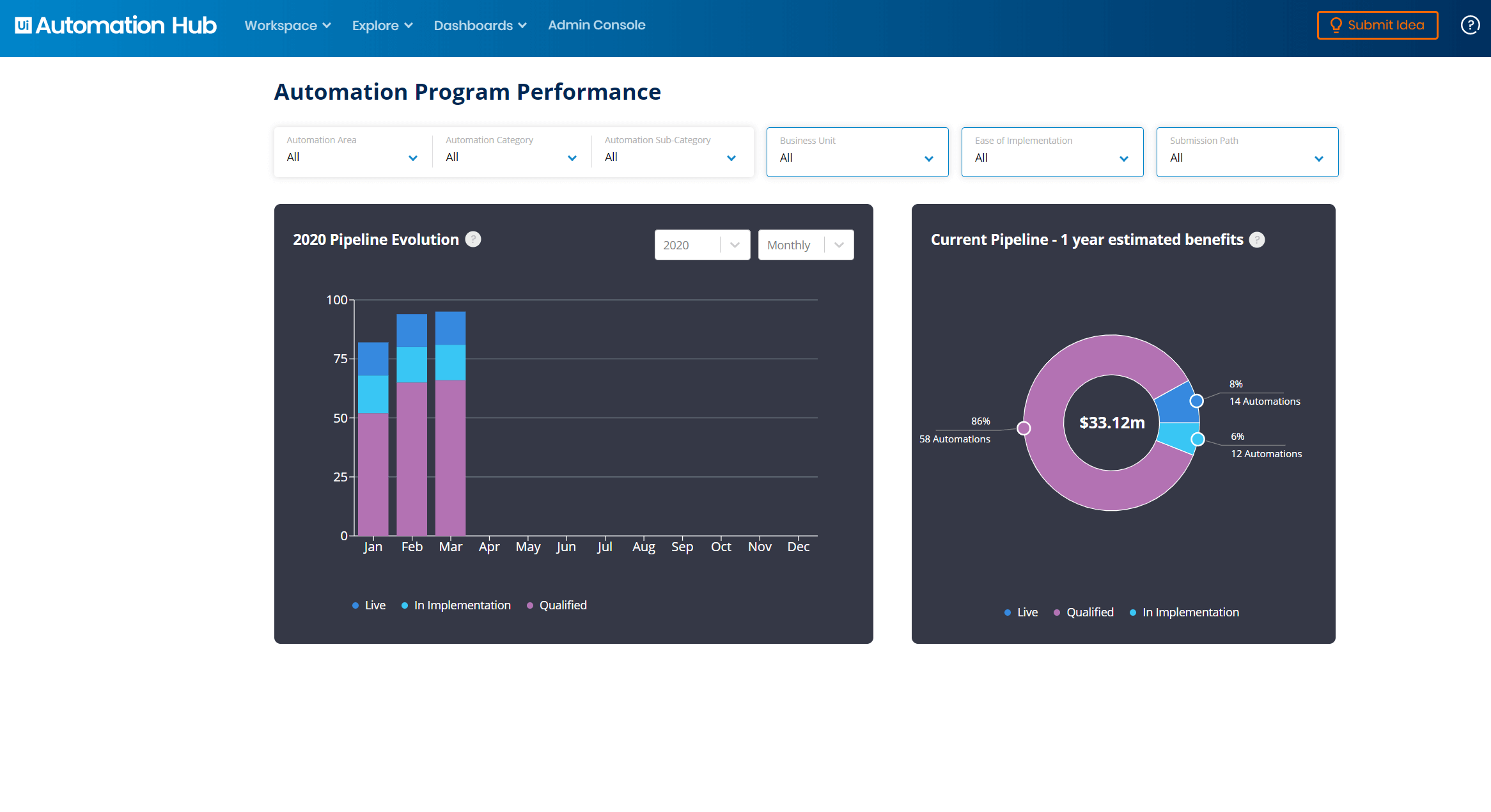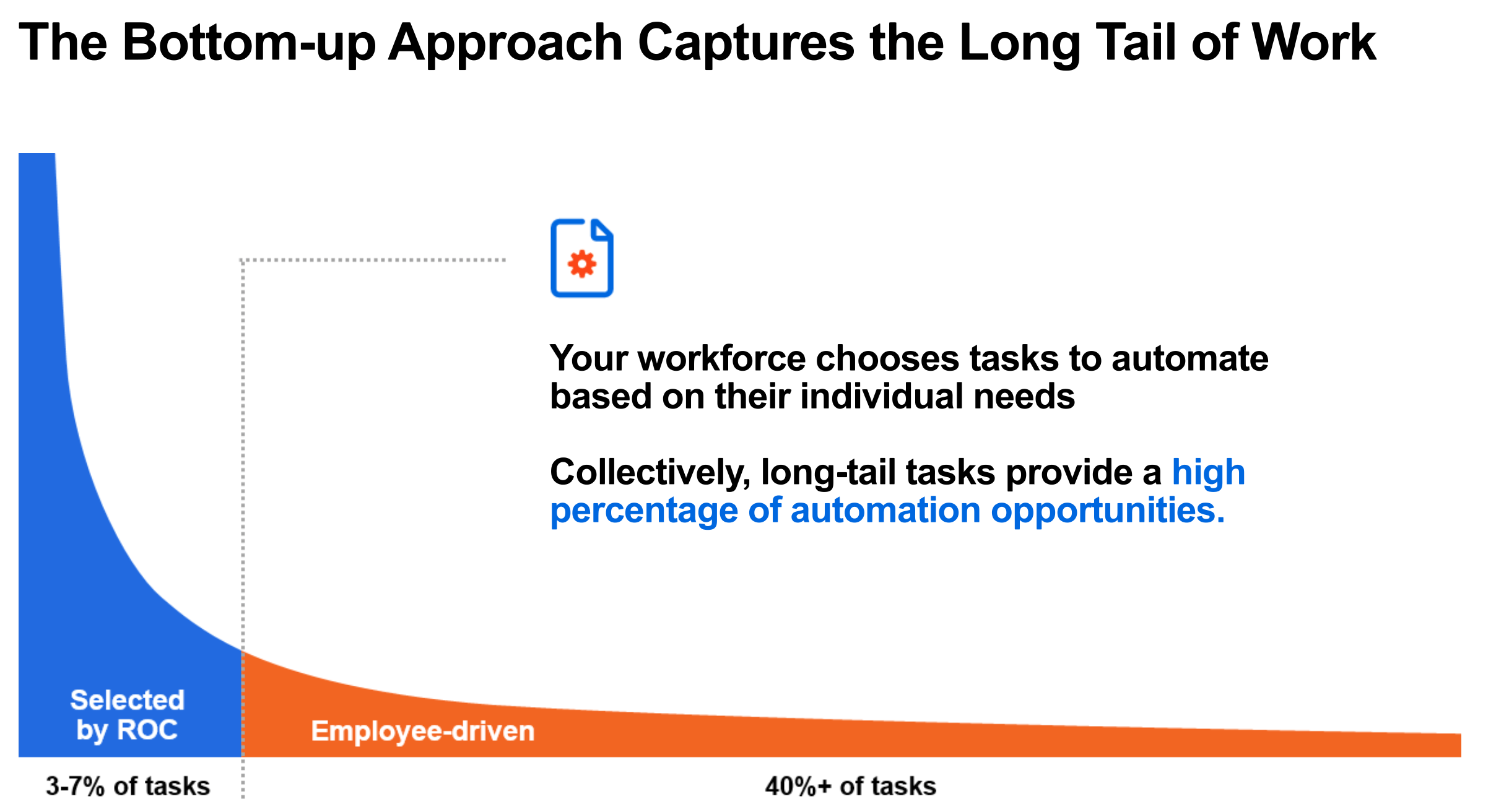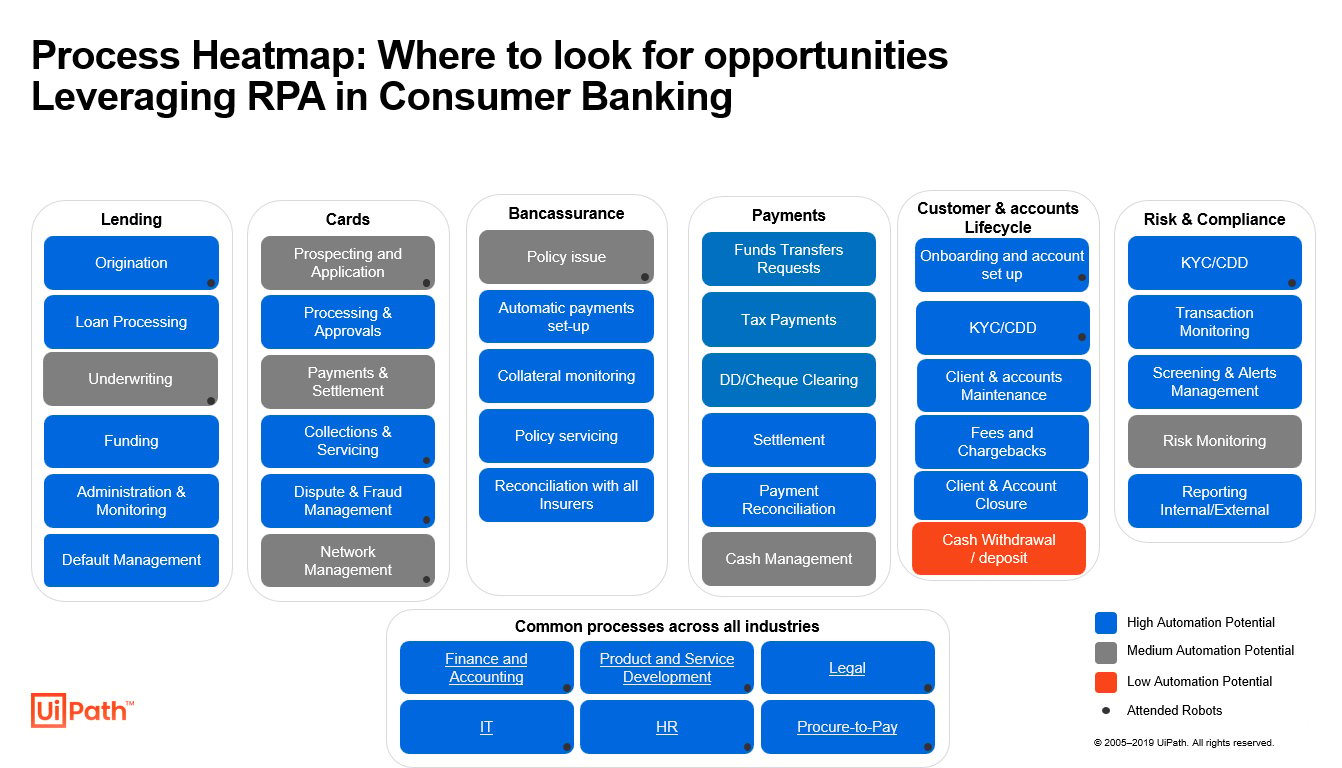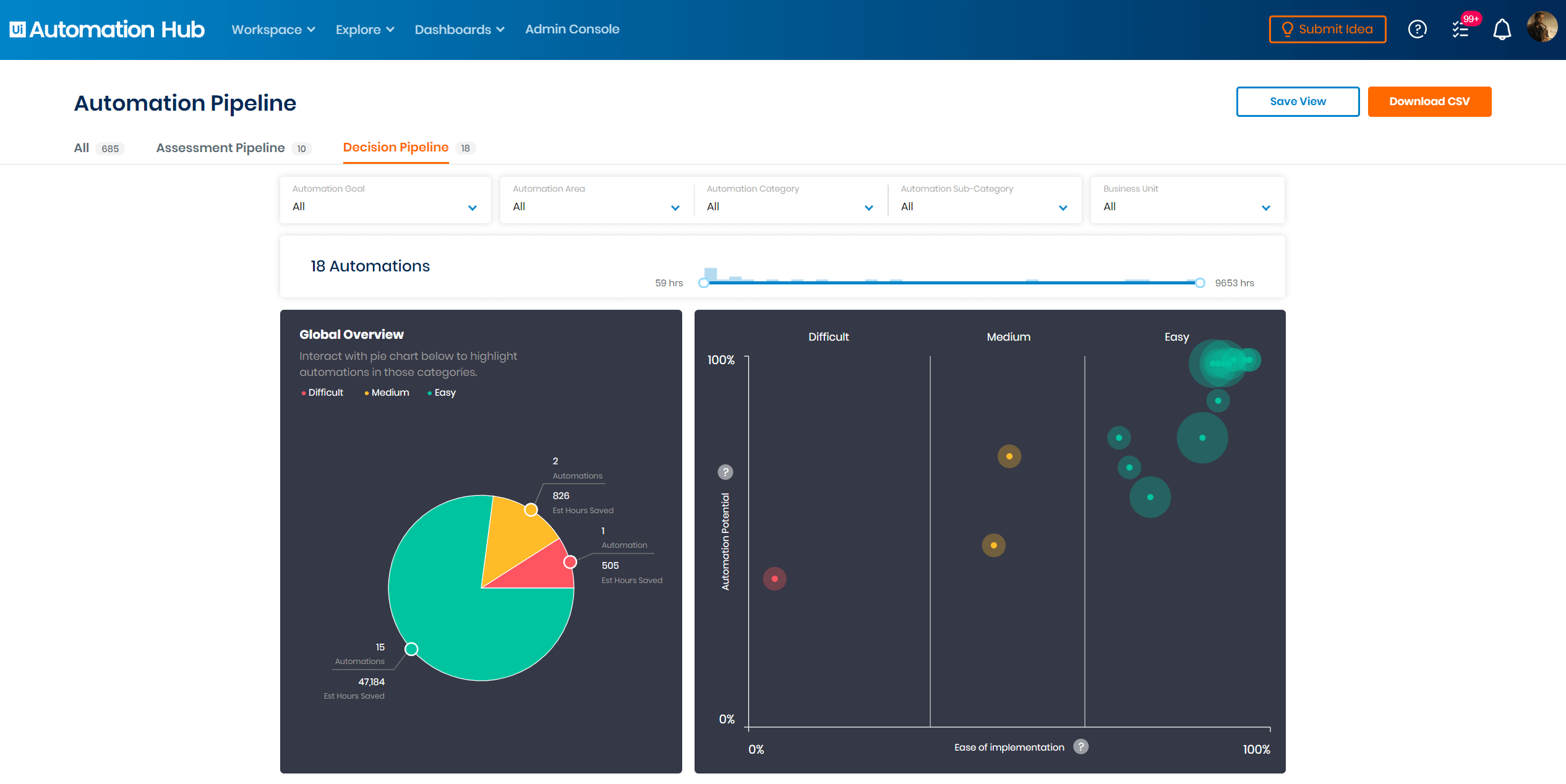How to Automate Your Business: Five Operational Automation Best Practices
Share at:

A report from The Economist Intelligence Unit surveyed 502 executives from several industries to get a better understanding of the current and future state of automation at companies globally. The report shows that 90.8% of companies are already using automation and that 50.6% are using it extensively.
Whether you were already on the path to scaling, or you’re simply adapting to new plans, we’ve outlined five operational best practices to consider when determining how best to fully realize the potential of automation throughout all levels of operations.
Automation best practice #1: Develop a governance structure
The sooner you set up a governance process, the better. Your automation governance model dictates how you structure responsibilities for evaluating and ranking automation opportunities. The most effective models provide guidelines and templates for the robot deployment process, including coordinating change management and accountability.
According to The Economist Intelligence Unit, 33.1% of companies cited data privacy and security concerns as top challenges for their automation deployments.
Early setup of a governance model helps ensure that you follow best practices for data privacy and security. It also gives you time to iterate and perfect your Robotic Process Automation (RPA) guidelines and avoid deployment hiccups.
For the best results, however, your business side and IT teams must communicate from the beginning. Without a foundation of transparent, regular communication between the two, technology integration and tool management can become monster tasks. A cross-functional communication effort also must include the cybersecurity team, who will ensure access to isolated databases with sensitive information is handled correctly.
Governance built on collaboration between business and IT is key to smooth RPA implementation. The two sides of the company should work together within the framework of your governance model to follow company policies, avoid duplication, set up user controls, and track security compliance issues.
Leverage tools like UiPath Automation Hub to establish a central location where both business and IT team members can collaborate on your automation strategy.
Automation best practice #2: Establish a robotic Center of Excellence
The key to scaling without sacrifice lies in your robotic Center of Excellence (CoE). You’re likely familiar with the concept of the CoE from other business initiatives.
In the automation first enterprise, the CoE acts as a formalized central unit that manages robot development and deployment. It’s made up of a cross-functional team committed to scaling automation while maintaining your governance processes. This team ensures high-quality automation standards as robots grow in number and scope across your company.
To support smooth employee-led scaling, your CoE must standardize automation, spread awareness, and provide best practices. With UiPath Automation Hub, your CoE can centrally manage, visualize, deploy, and measure automation opportunities throughout your company.

This multi-disciplinary CoE team—which will include IT leaders, C-suite, marketing, and department representatives—will mature as you scale.
Whether your company is just beginning your automation journey or is well on the way to scaling your strategy, it is critical to understand the unique and important role a CoE plays in the digital transformation journey.
As their automation strategy matures, the CoE will begin to take on the training of citizen developers—technically-minded employees who can assist in the development and deployment of software robots. As their knowledge matures, these citizen developers will create new business applications for business users and expand RPA adoption under the objectives of the CoE.
The robotic CoE is the heart of your digital transformation. And Automation Hub is the operating system (OS) for the CoE—from which business users, IT leaders, and RPA evangelists will drive your automation strategy to scale.
Automation best practice #3: Empower employee-driven automation
About 3% - 7% of your process automation will be driven directly by your CoE, while employees will nominate much of the rest of the workflows robots will take over.
Empowering citizen developers with RPA training lets companies leverage the skillsets of technical employees and a wealth of crowdsourced ideas. Employees can suggest automations using Automation Hub and help fill the company’s automation pipeline.

Then, with guidance from your CoE, developers can automate the suggested processes flagged by employees.
For example, caseworkers at healthcare firms must retrieve data from hundreds of different documents to work on each case. A CoE might not have visibility into the complexity of this process, but with employee-driven automation, caseworkers could flag the process for potential automation, and then use robots provided by the CoE to scan documents and pull up the information they need every day.
Taking feedback and ideas from the bottom up ensures that your company supports a culture that embraces automation.
The automation first era isn’t done evolving. The companies that will lead it will systematize a culture rooted in digital transformation best practices.
Automation best practice #4: Identify the right processes to automate
Automation has many use cases and endless potential. This can make it difficult for companies to hone in on and prioritize the opportunities for the most growth. Scaling automation successfully depends on your ability to build a robust pipeline that keeps automation ideas flowing, and a CoE that ensures those opportunities match larger goals.
Your CoE will prioritize automation opportunities based on overall business goals in three ways:
Rank tasks by time spent and frequency of occurrence for the highest return on investment (ROI) impact.
Train business analysts to look for highly repetitive, well-documented, and computer-based processes.
Flag potential bottlenecks and process gaps that could be streamlined with automation.
The above three-tiered approach for identifying automation potential can inform a process heatmap, which can help you discover potential RPA use cases and prioritize rollout.

This heatmap shows the automation potential within a consumer banking organization.
Savvy CoEs are moving beyond the traditional heatmap and employing Automation Hub. Automation Hub utilizes a quantitative analysis of ROI and then prioritizes automation opportunities all in one spot:

Automation best practice #5: Leverage the automation ecosystem
The automation first era presents an enormous series of changes across companies, regions, and economies. Thankfully, this growth has created a wealth of technology experts who can help you.
With the best end-to-end enterprise automation platform and measured strategy development, you can navigate your company’s automation journey solo. But you don’t have to. Experts exist in the automation ecosystem to help you fast track your success, build a strategy based on their industry expertise, and troubleshoot any issues you run into.
UiPath offers an extensive ecosystem of partners who can train your team and provide technological solutions. Your employees should identify pain points within your organization and processes, which your automation partners can then help you automate successfully.
This may require a mix of fully automated processes and workflows that combine both human knowledge and robot labor. These experts will help you identify which combination is appropriate for your use case.
Related read: Top 5 Things to Consider When Selecting an Automation Partner
Additionally, automation experts give you expert knowledge to help you scale the full suite of automation technologies you need to innovate, including machine learning (ML), artificial intelligence (AI), and optical character recognition (OCR).
When selecting an expert, be sure to communicate your short- and long-term goals with them so you find an expert that grows with you to help you define and conquer problems along your automation journey.
Leverage top-down and bottom-up models for automation success
Companies that thrive in the automation first era will have both a bottom-up and top-down approach to operations. Different people will have different expertise, approaches, and skills, but with the right operating model, they can work toward a shared vision.
Claim your free copy of "Welcome to the Automation First Era: Your guide to a thriving enterprise in an automated world" to find out how you can create an automation first enterprise.
Or, if you're ramping up now and want help getting started with automation contact us. We would be happy to assist you.

Chief Marketing Officer (CMO), Ada
Get articles from automation experts in your inbox
SubscribeGet articles from automation experts in your inbox
Sign up today and we'll email you the newest articles every week.
Thank you for subscribing!
Thank you for subscribing! Each week, we'll send the best automation blog posts straight to your inbox.



